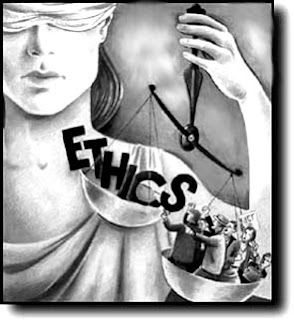Also read article on Should Indian Lawyers be Allowed to be Paid on Contingency Basis
“Ethics is not definable, is not
implementable, because it is not conscious; it involves not only our thinking, but
also our feeling.”
Introduction
Open
the newspaper on any regular day and you will see news such as doctor being
caught in the business of revealing the sex of a foetus or a judge accused of
taking a bribe or similar stories. Only a person of the respective profession
can understand the shame the members of their profession feel when they read
such news.
Professional
ethics is basically the standard or code of behavior that a professional must
follow. There is no clear definition of the word ‘professional’, but for the
purposes of professional ethics it may be safe to assume that a
"professional" means any person in an occupation which requires
public licensing or





























![DATA PROTECTION LAWS DATA PROTECTION LAWS IN VARIOUS COUNTRIES: This part specifically deals with the laws relating to data protection and laws relating to protection of infringement of right to privacy in foreign countries. The role and contribution of European Union on data protection and privacy laws have also been mentioned in the chapter to show the concern of international organisations on privacy law. The Privacy Act of 1974, United States of America Roots of the Privacy Act of 1974 can be traced as far back as 1965 when hearings were held by the House of Representatives Special Subcommittee on Invasion of Privacy.[7] Privacy Act of 1974 is a companion to and extension of the Freedom of Information Act of 1966 (FOIA).[8] The Privacy Act of 1974[9] establishes a code of fair information practices that governs the collection, maintenance, use, and dissemination of personally identifiable information about individuals that is maintained in systems of records by federal agencies. A system of records is a group of records under the control of an agency from which information is retrieved by the name of the individual or by some identifier assigned to the individual.[10] The prohibition of disclosure of information from a system of records is the main area of focus of The Privacy Act of 1974. The Act set forth some basic principles of “fair information practice” and provided individuals with the right of access to information about themselves and the right to challenge the contents of records. It required that personal information may only be disclosed with the individual’s consent or for purposes announced in advance. The Act required federal agencies to publish an annual list of systems maintained by the agency that contain personal information.](http://3.bp.blogspot.com/-YPzAi3BIajc/T6rJ1Twf3dI/AAAAAAAAAXY/08xKoLcGM64/s320/data+protection.jpg)
